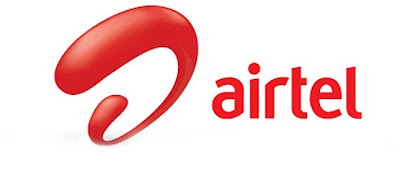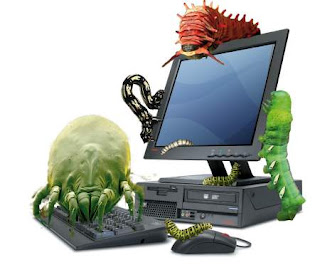First Generation (1941-1956)
World
War gave rise to numerous developments and started off the computer
age. Electronic Numerical Integrator and Computer (ENIAC) was produced
by a partnership between University of Pennsylvania and the US
government. It consisted of 18,000 vacuum tubes and 7000 resistors. It
was developed by John Presper Eckert and John W. Mauchly and was a
general purpose computer. "Von Neumann designed the Electronic Discrete
Variable Automatic Computer (EDVAC) in 1945 with a memory to hold both a
stored program as well as data." Von Neumann's computer allowed for all
the computer functions to be controlled by a single source.
Then in
1951 came the Universal Automatic Computer (UNIVAC I), designed by
Remington rand and collectively owned by US census bureau and General
Electric. UNIVAC amazingly predicted the winner of 1952, presidential
elections, Dwight D. Eisenhower.
In first generation computers, the
operating instructions or programs were specifically built for the task
for which computer was manufactured. The Machine language was the only
way to tell these machines to perform the operations. There was great
difficulty to program these computers and more when there were some
malfunctions. First Generation computers used Vacuum tubes and magnetic
drums (for data storage).
 The IBM 650 Magnetic Drum Calculator
The IBM 650 Magnetic Drum Calculator
Second Generation Computers (1956-1963)
The
invention of Transistors marked the start of the second generation.
These transistors took place of the vacuum tubes used in the first
generation computers. First large scale machines were made using these
technologies to meet the requirements of atomic energy laboratories. One
of the other benefits to the programming group was that the second
generation replaced Machine language with the assembly language. Even
though complex in itself Assembly language was much easier than the
binary code.
Second generation computers also started showing the
characteristics of modern day computers with utilities such as printers,
disk storage and operating systems. Many financial information was
processed using these computers.
In Second Generation computers, the
instructions (program) could be stored inside the computer's memory.
High-level languages such as COBOL (Common Business-Oriented Language)
and FORTRAN (Formula Translator) were used, and they are still used for
some applications nowadays.
The IBM 7090
The
IBM 7090, announced in 1958, was a transistorized version of the
vacuum-tube-logic 709 and the first commercial computer with transistor
logic (the first such computing device, according to , was the IBM 608, but that was not a general-purpose stored-program computer).
 Grayson
Kirk, President of Columbia University (right) and Kenneth M. King,
director of the University's new Computer Center, 1963, in the machine
room at the IBM 7090 console, "one of the largest computers in
existence" at the time. Photo: found in an unattributed newspaper
clipping in the Columbiana archive.
Grayson
Kirk, President of Columbia University (right) and Kenneth M. King,
director of the University's new Computer Center, 1963, in the machine
room at the IBM 7090 console, "one of the largest computers in
existence" at the time. Photo: found in an unattributed newspaper
clipping in the Columbiana archive.

The
IBM 7090 Console in the Columbia Computer Center machine room, 1966.
Pictured: A group of particle physicists who discovered the violation of
charge-conjugation invariance in interactions of intermediate strength:
Charles Baltay and Lawrence Kirsch of Nevis Lab (back row); Juliet
Lee-Franzini of SUNY Stony Brook and team leader Paulo Franzini of Nevis
Lab
Third Generation Computers (1964-1971)
Although
transistors were great deal of improvement over the vacuum tubes, they
generated heat and damaged the sensitive areas of the computer. The
Integrated Circuit(IC) was invented in 1958 by Jack Kilby. It combined
electronic components onto a small silicon disc, made from quartz. More
advancement made possible the fittings of even more components on a
small chip or a semi conductor. Also in third generation computers, the
operating systems allowed the machines to run many different
applications. These applications were monitored and coordinated by the
computer's memory.
The IBM 360/91
 Installation of the IBM 360/91 in the Columbia Computer Center machine room in February or March 1969. Photo: AIS archive.
Fourth Generation (1971-Present)
Installation of the IBM 360/91 in the Columbia Computer Center machine room in February or March 1969. Photo: AIS archive.
Fourth Generation (1971-Present)
Fourth
Generation computers are the modern day computers. The Size started to
go down with the improvement in the integrated circuits. Very Large
Scale (VLSI) and Ultra Large scale (ULSI) ensured that millions of
components could be fit into a small chip. It reduced the size and price
of the computers at the same time increasing power, efficiency and
reliability. "The Intel 4004 chip, developed in 1971, took the
integrated circuit one step further by locating all the components of a
computer (central processing unit, memory, and input and output
controls) on a minuscule chip."
Due to the reduction of cost and the
availability of the computers power at a small place allowed everyday
user to benefit. First, the minicomputers which offered users different
applications, most famous of these are the word processors and
spreadsheets, which could be used by non-technical users. Video game
systems like Atari 2600 generated the interest of general populace in
the computers.
In 1981, IBM introduced personal computers for home
and office use. "The number of personal computers in use more than
doubled from 2 million in 1981 to 5.5 million in 1982. Ten years later,
65 million PCs were being used." Computer size kept getting reduced
during the years. It went down from Desktop to laptops to Palmtops.
Mackintosh introduced Graphic User Interface in which the users don’t
have to type instructions but could use Mouse for the purpose.
The
continued improvement allowed the networking of computers for the
sharing of data. Local Area Networks (LAN) and Wide Area Network (WAN)
were potential benefits, in that they could be implemented in
corporations and everybody could share data over it. Soon the internet
and World Wide Web appeared on the computer scene and fomented the
Hi-Tech revolution of 90's.
Desktop Computer.
Fifth generation computers
Fifth
generation computers are mainly future computers. Of course some modern
computers also belong to this generation. The aim of these computers is
to develop devices that respond to natural language input and are
capable of learning
and self-organization. In these computers massive numbers of CPUs are
used for more efficient performance. Voice recognition is a special
feature in these computers. By using superconductors and parallel
processing computer geeks are trying to make artificial intelligence a
reality. Quantum computing, molecular and nanotechnology will change the
face of computers in the coming years.



















